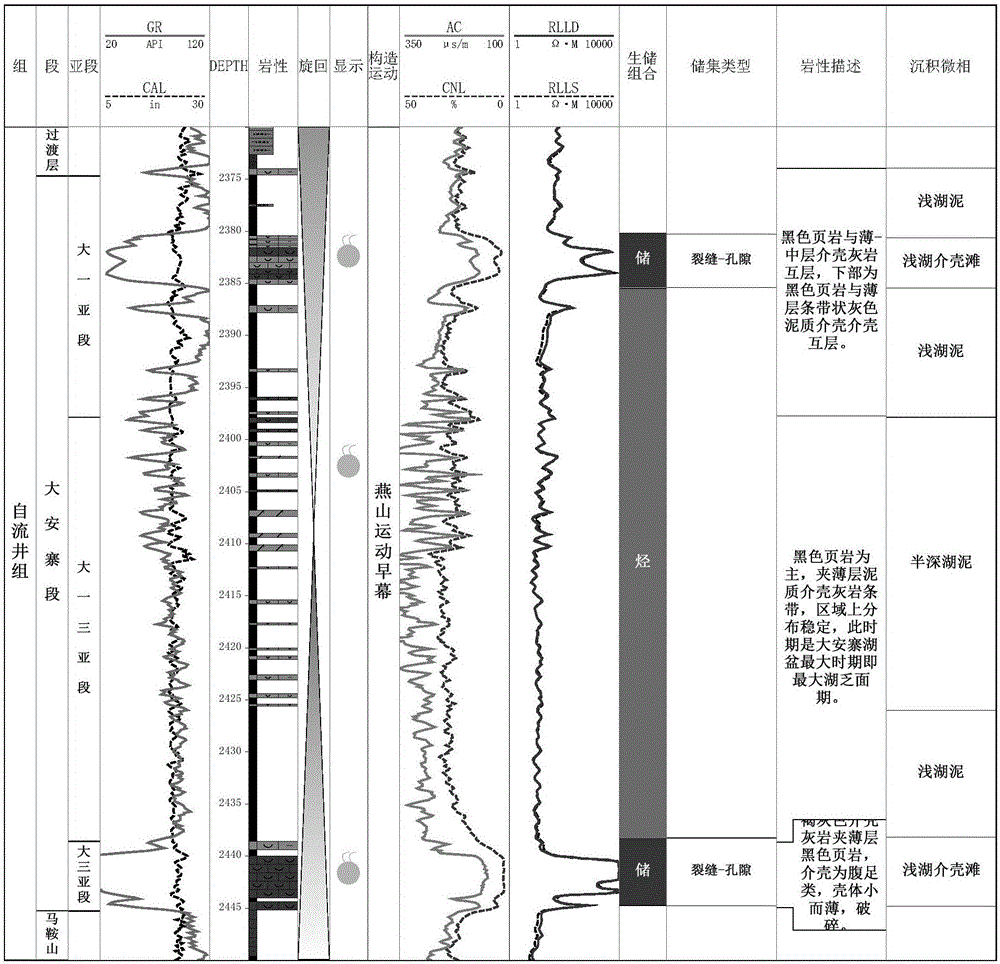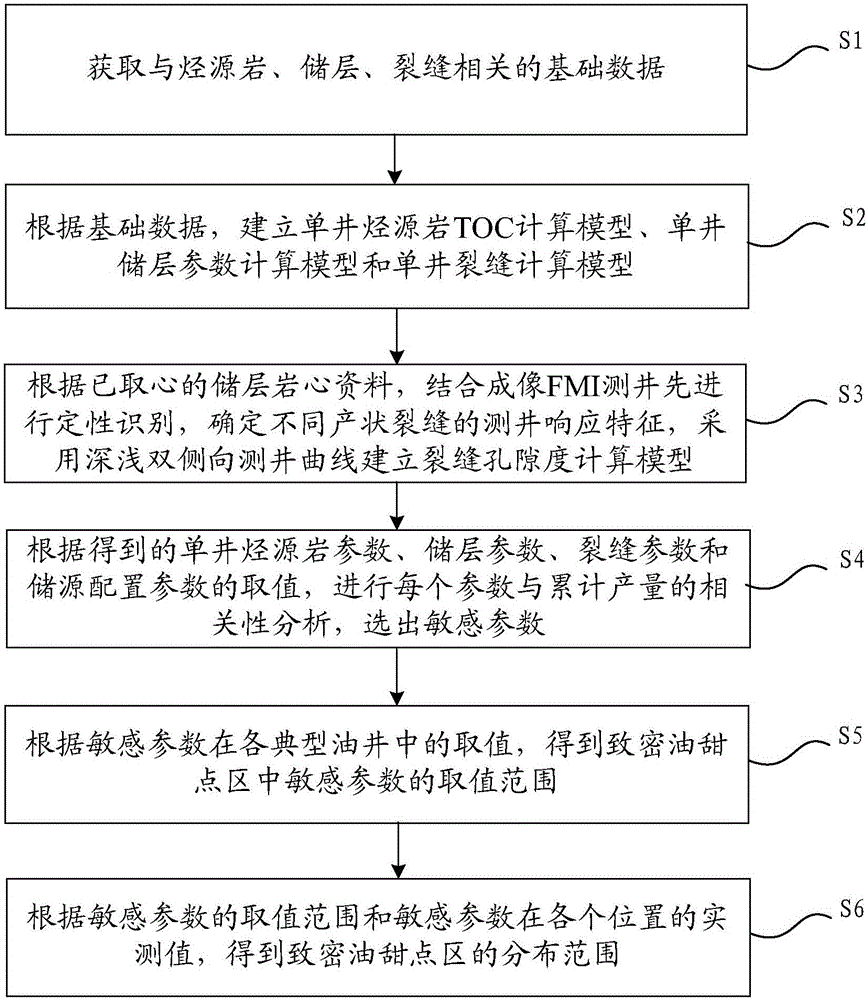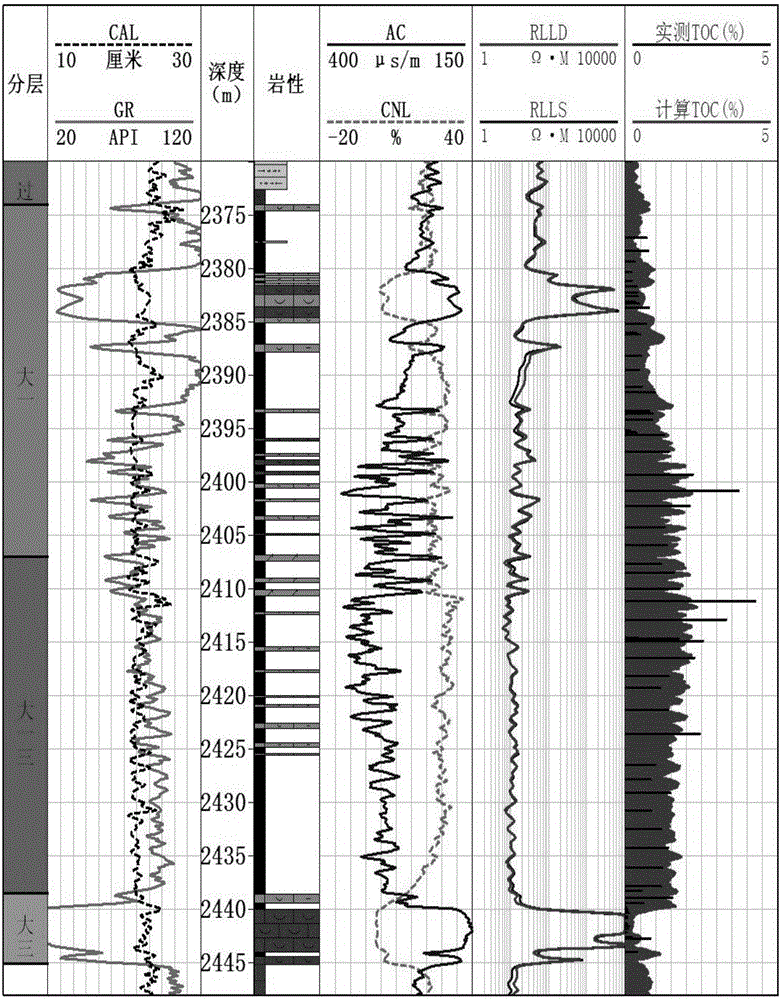Method for predicting lacustrine facies ultralow-porosity permeability reservoir tight oil sweet spot region
A prediction method and technology for tight oil, applied in the field of oil and gas exploration, can solve the problems of large gaps and constraints in the geological background of tight oil, and achieve the effects of reliable technical support, strong applicability, and comprehensive interpretation.
- Summary
- Abstract
- Description
- Claims
- Application Information
AI Technical Summary
Problems solved by technology
Method used
Image
Examples
Embodiment Construction
[0037] In order to make the technical solutions and advantages of the present invention clearer, the following further describes the embodiments of the present invention in detail with reference to the accompanying drawings.
[0038] First, explain the meaning of some terms used in the present invention:
[0039] Ultra-low porosity and permeability reservoirs: According to the Petroleum and Natural Gas Industry Standard of the People’s Republic of China (SY-T6285-2009), the reservoirs with porosity of less than 5% and permeability of less than 0.1mD are defined as ultra-low porosity and permeability reservoirs.
[0040] Tight oil: It means that it is stored in the source rock in an adsorbed or free state, or interbeds with the source rock, adjacent tight sandstone, tight carbonate rock and other reservoir rocks, without large-scale long-distance migration Oil accumulation. Generally, the permeability of the matrix overburden is 0.1mD (the gas permeability is 1mD) as the upper limit ...
PUM
 Login to View More
Login to View More Abstract
Description
Claims
Application Information
 Login to View More
Login to View More - R&D
- Intellectual Property
- Life Sciences
- Materials
- Tech Scout
- Unparalleled Data Quality
- Higher Quality Content
- 60% Fewer Hallucinations
Browse by: Latest US Patents, China's latest patents, Technical Efficacy Thesaurus, Application Domain, Technology Topic, Popular Technical Reports.
© 2025 PatSnap. All rights reserved.Legal|Privacy policy|Modern Slavery Act Transparency Statement|Sitemap|About US| Contact US: help@patsnap.com



